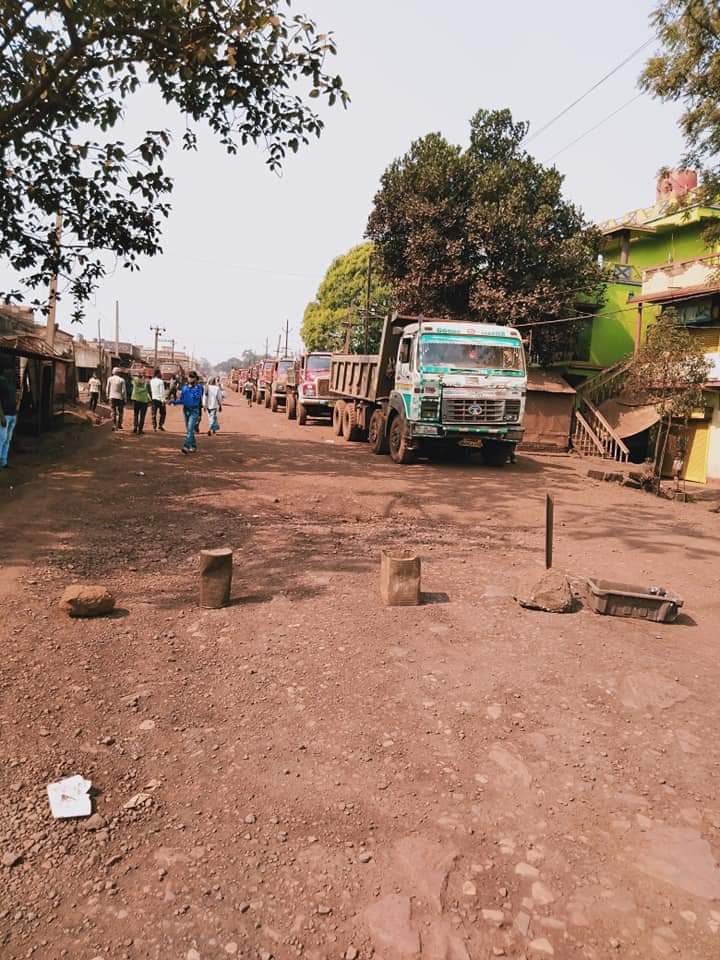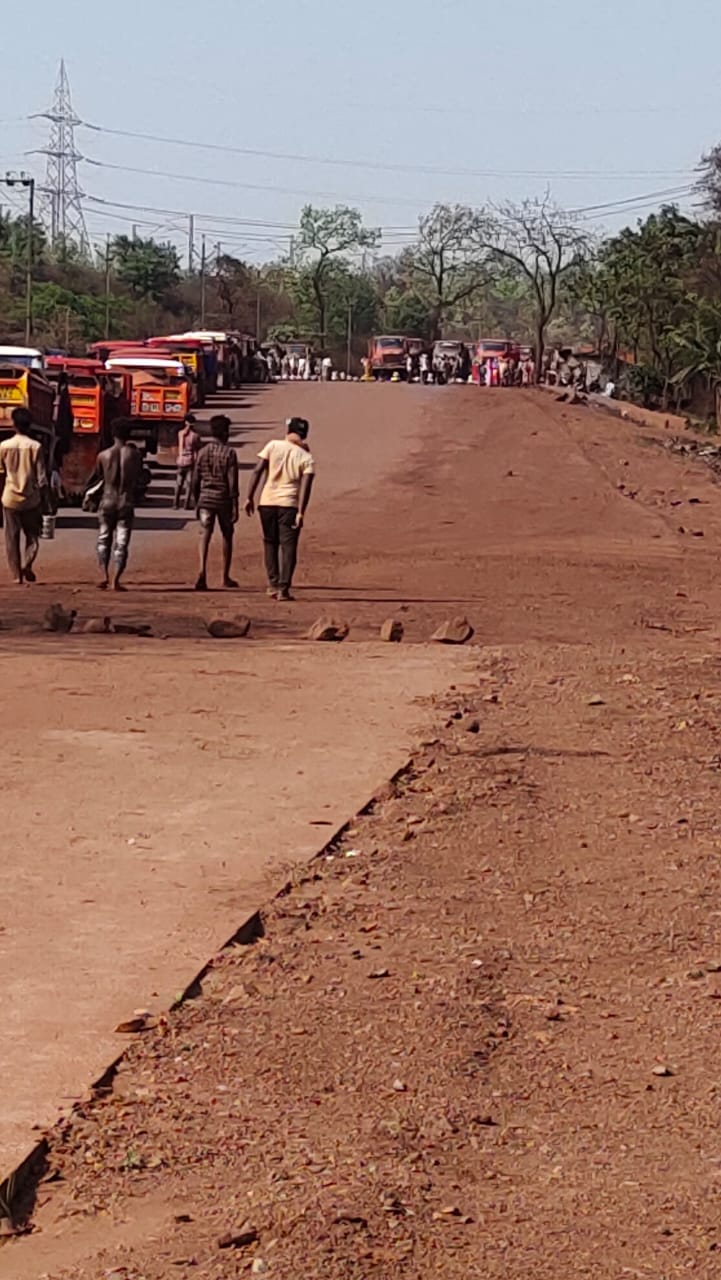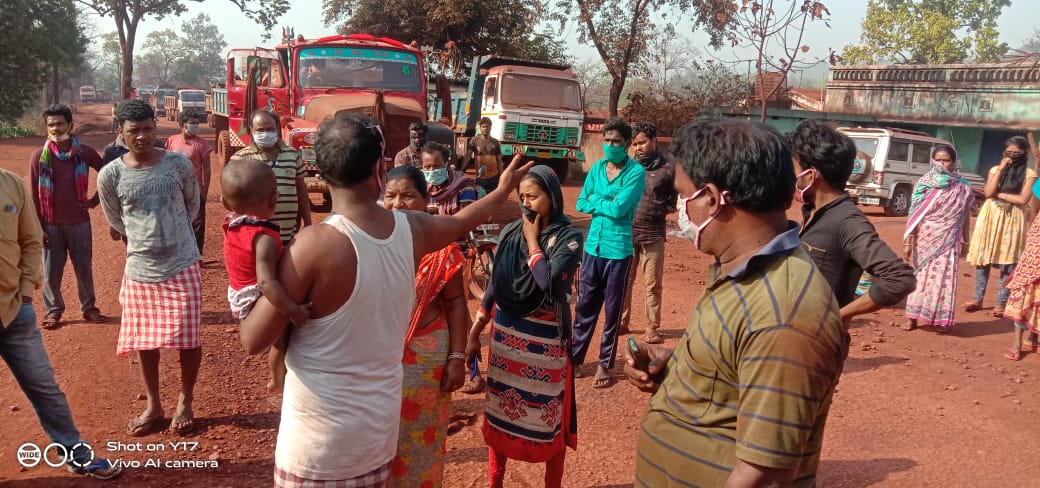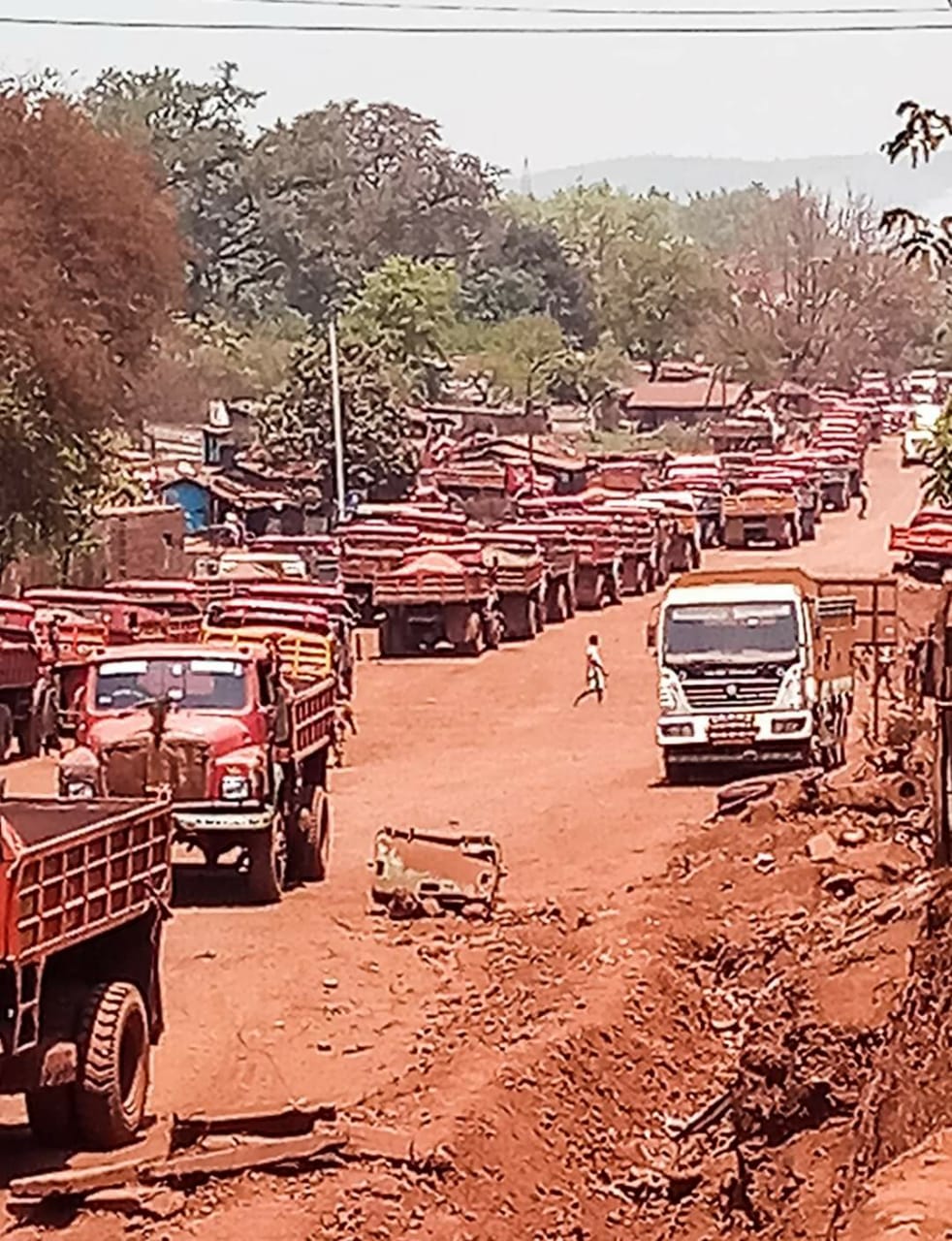Has the coronavirus lockdown increased health risks in mining areas?
Hundreds of villagers in Keonjhar district of Odisha are protesting and demanding a shut down of mining and industrial operations

Kanchi Kohli, Sampada Nayak and Santosh Dora
Since April 13, 2020, hundreds of residents living between Kamarjoda and Jurudi villages in Keonjhar district of Odisha have blocked a major transportation route on the state highway. They have used big stones and tree trunks to stall movements of trucks and demanded that mining and industrial operations near their homes be shut down.
Why must people be out on the streets, risking their lives when there is a call for a nationwide lockdown? What pushes them to gather in protest when the government and medical professionals have asked for social distancing measures? Ever since “social emergency” measures to tackle Covid-19 were announced by the national government on March 24, the visuals of reverse migration of the labour force to their villages has transformed into a crisis of epic proportion. While this reality continues to challenge government’s relief operations, there is trouble brewing elsewhere. This time it is in parts of India where mining, power generation and industries have continued to operate as essential services.
“The trucks come from other states like Andhra Pradesh, Chhattisgarh, Tamil Nadu and from other districts within Odisha, like Jajpur, where positive COVID cases have been reported. We are scared for our health and safety. The local people and other migrant labourers working in these mines and industries are also scared of going to work. However, some are forced to work for the fear of losing their jobs,” said Rabindra Khamania, a resident of Bada Kalimati village in Keonjhar, Odisha.

Not a routine protest against pollution
Vinod Karua, a resident of Joribahal village, Joda block in Keonjhar was one those who did not ‘stay at home’ and has demanded a complete shutdown of mining, industries and road transportation of minerals. His says: “There is state lockdown, but we cannot see any effect of that here. There is incessant mining and transportation going on here. There is dust inside our homes, in our drinking water and everywhere. We face difficulty in breathing and we cannot sleep at night. There is red dust everywhere.”
This may sound like a routine incident in any highly-polluted mining area like Keonjhar, where villagers take to the streets, call out mining companies and send complaints to the local authorities. But it isn’t. It comes at a time, when the world is facing one of the greatest public health crisis and people in Joda fear for their lives like everyone else in the world. Villagers, who are protesting say that both local and migrant labour in the area are refusing to return to work. An unsafe and accident-prone work environment just got worse with the new threat of Covid-19 pandemic.

Keonjhar district has 126 mines and 80 industries most of which are currently functional. These operations include the state-run Odisha Mining Corporation (OMC) and private corporations like Tata Steel Ltd, Jindal Steel & Power Ltd. The ore from these mines are transported all the way to Chhattisgarh and Andhra Pradesh. In December 2019, the National Environmental Engineering Research Institute (NEERI) and State Pollution Control Board had “expressed serious concern” on the pollution caused by mining activity in Keonjhar and in particular Joda-Barbil-Koira area.
A more recent factor contributing to the dust pollution is movement of heavy vehicles and machinery on National Highway (NH) 520, even when the upgradation work remains incomplete. This highway, which connects Panikoili-Keonjhar-Rajamunda, passes through Joda and Barbil blocks in Keonjhar. Last year, the Keonjhar district administration reportedly asked the local mining authorities to streamline the transportation, which did not translate into any action. News reports point to inconveniences to schools and hardships to “patients going to hospitals on the route.”

When a lockdown increases risks
For several years, people from Joda and Barbil had filed repeated complaints before regulatory authorities. It is only in the last year- and-half that project proponents had begun adhering to mitigation measures like sprinkling of water and covering of trucks, bringing partial relief. With the lockdown in place, these legally mandated safeguards, prescribed in environmental clearances and consent orders, were first to stop.
Rajen Champia from Joribahal village said: “Trucks, tippers and dumpers are used for transportation in Joda and were plying twenty-four seven before the lockdown. When we protested, the timing was changed 8 am to 8 pm for a few days. But this did not last long. In fact, with no other traffic on the roads, more number of trucks can transport material from the mines.”
Villagers say that they made repeated phone calls to the pollution control authorities and the district administration. However, institutions responsible for ensuring compliance like the Pollution Control Boards and environment ministry’s regional office are working remotely without any grievance redressal and onsite monitoring mechanism in place. So, they found no other option but to physically block the road, to protect themselves and their families.

What does this mean for lockdown 2.0?
The lockdown extension is now in place till May 3. The new protocol for Covid-19 lockdown kicks in on April 20. The comprehensive guidelines issued by the Ministry of Home Affairs (MHA) on April 15 have been put in place to “mitigate the hardship to the public.” It works on the premise that kick-starting industrial and construction activity will give the much-needed boost to the national economy. Odisha had announced a lockdown extension five days earlier on April 9 and subsequently issued guidelines to allow operation of iron ore mines, pellet plant, production of steel, aluminum and other industries. Inter and intra state transportation services for movement of goods and cargo is also allowed.
But neither announcements nor the guidelines allay the fears of people living in areas like Keonjhar. Keonjhar is still not reported any Covid-19 cases, but that is not the case in areas like Korba in Chhattisgarh. What is common to both these places is the history of heavy pollution, health risks and weak public infrastructure making access to medical services severely constrained. Medical practitioners have already pointed out to that “high pollution levels might also increase the risk of contracting COVID-19 as particulate matter has the potential to act as carriers for contagion leading to rapid spread over larger areas”
Unfortunately, environment regulation has failed to build long-term epidemiological assessments for monitoring project impacts and reviewing project approvals. Independent assessments that attribute respiratory illnesses, skin diseases and other health impacts in mining, industry are often denied or considered too localized to inform environment health policy. There is no guarantee that these concerns will be addressed in standard operating protocol (SOP) for industrial, construction and mining operations when the lockdown 2.0 guidelines kick in next week.
The authors are researchers with the Centre for Policy Research

